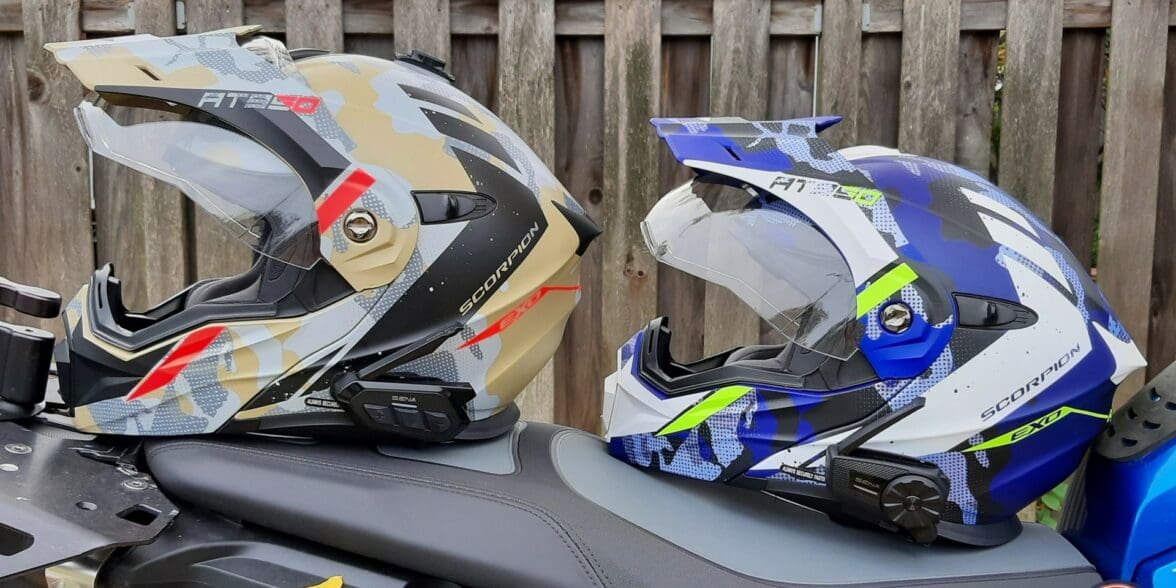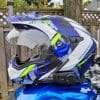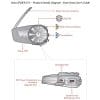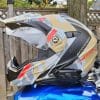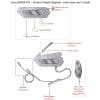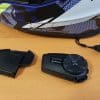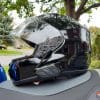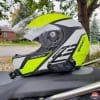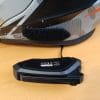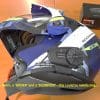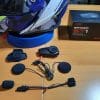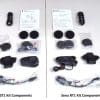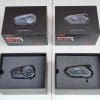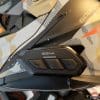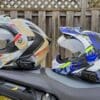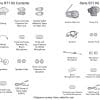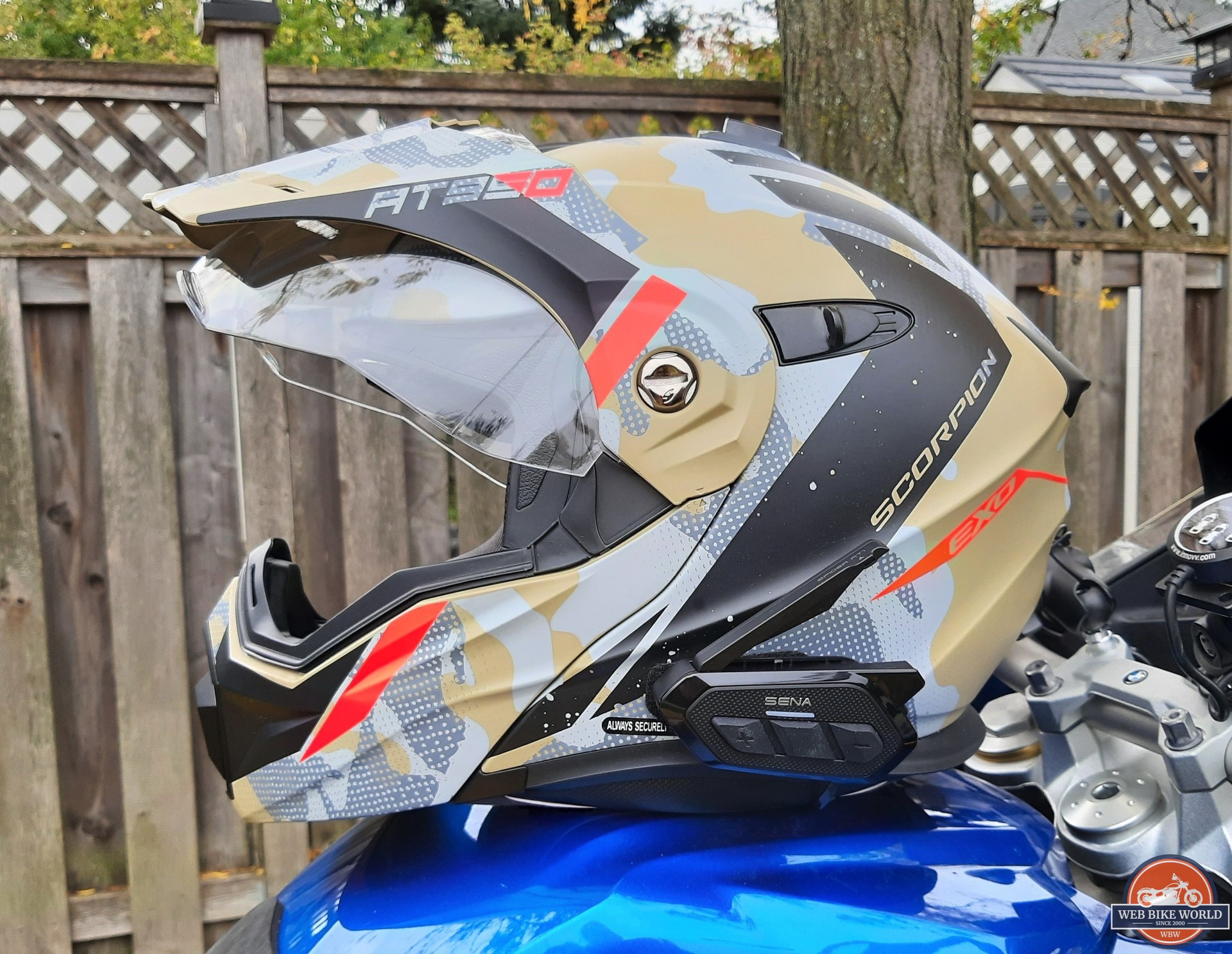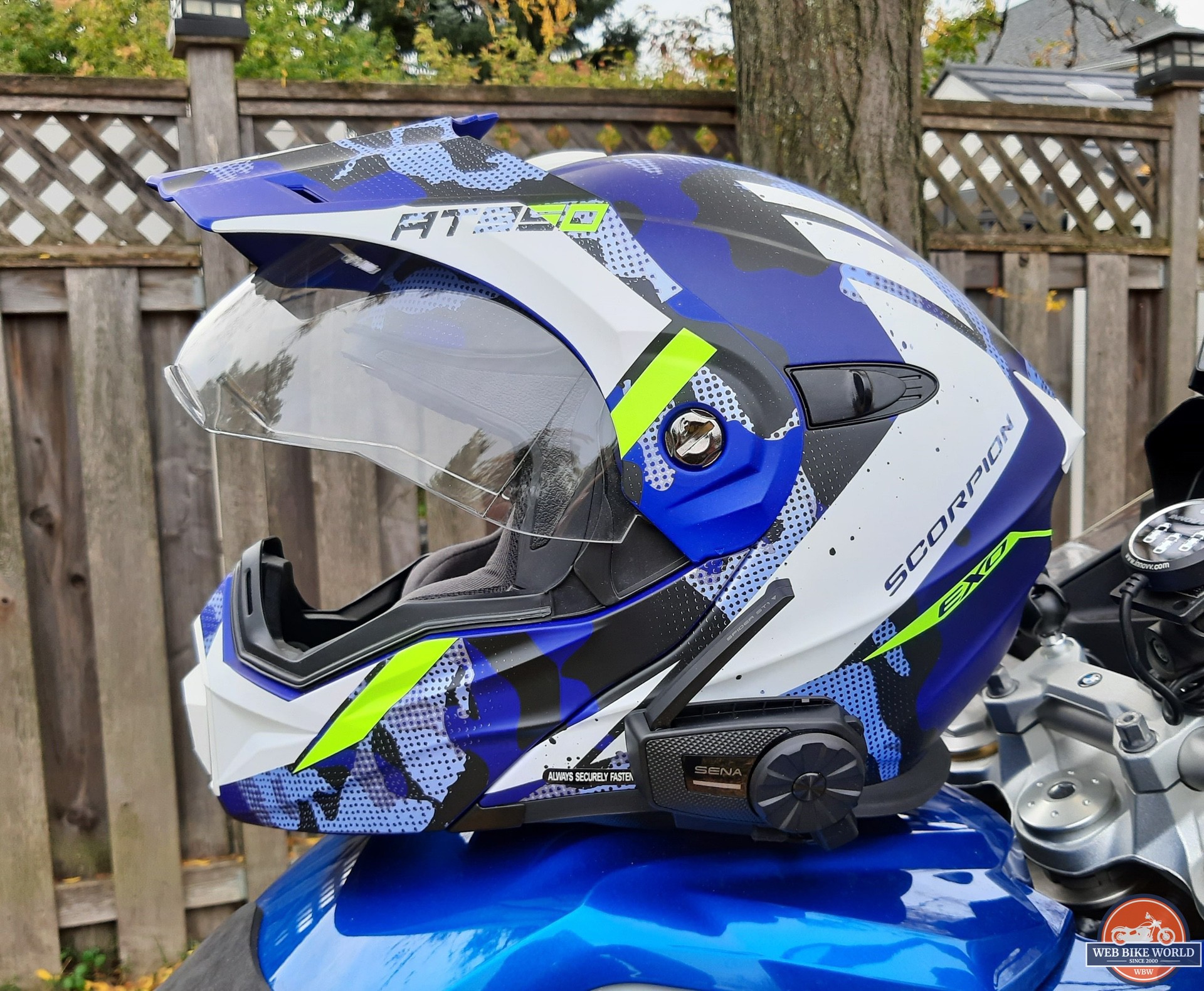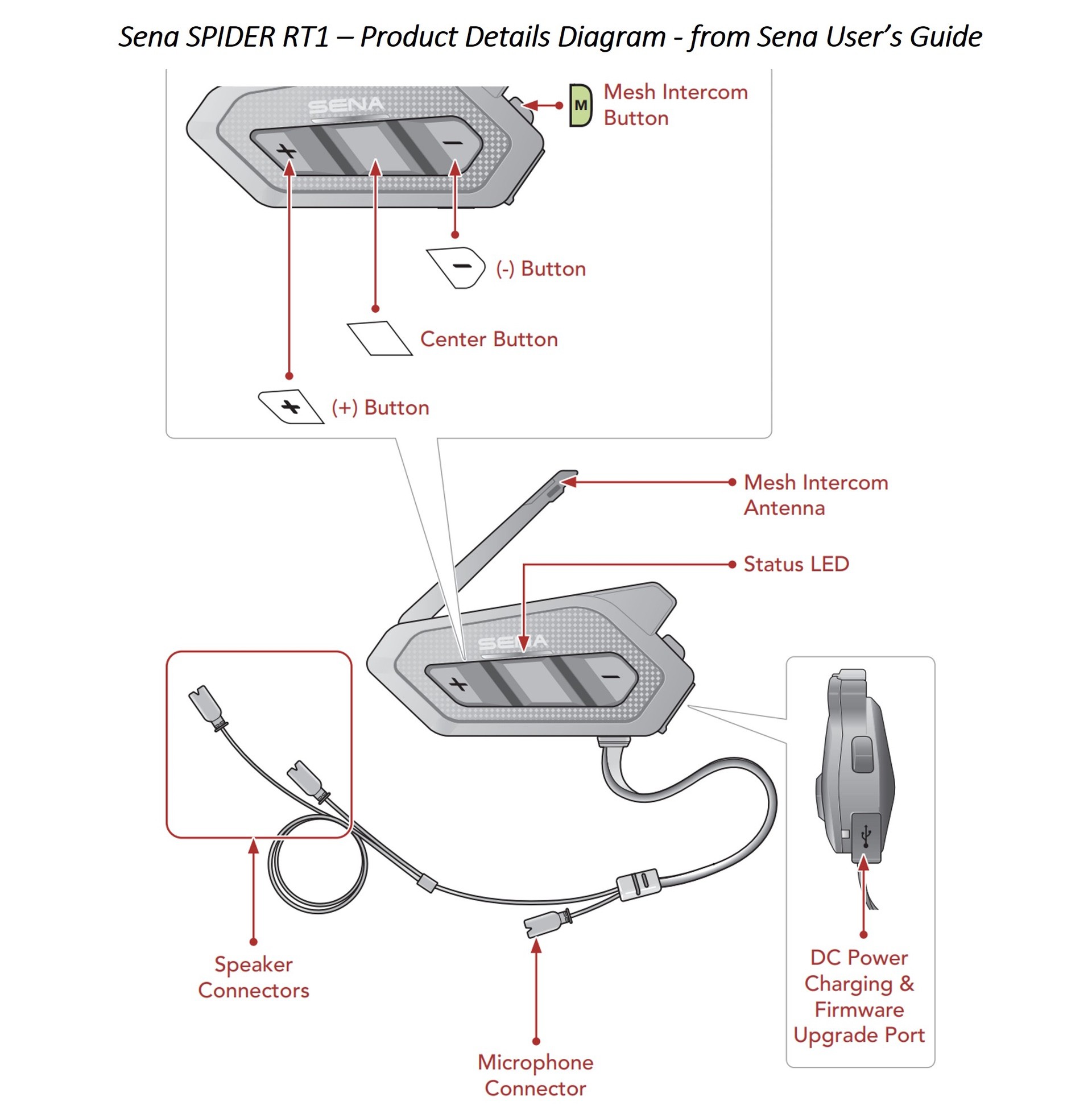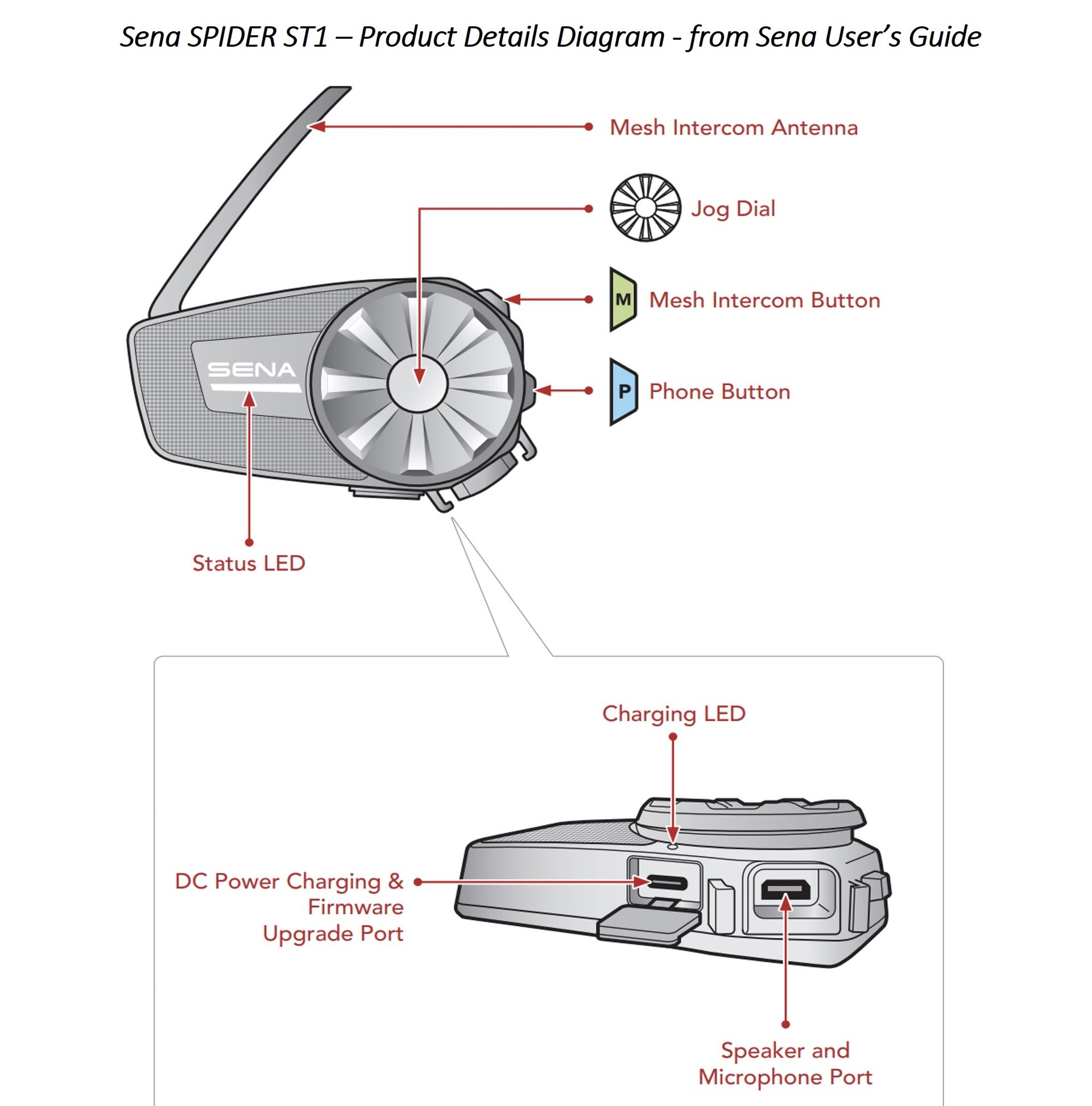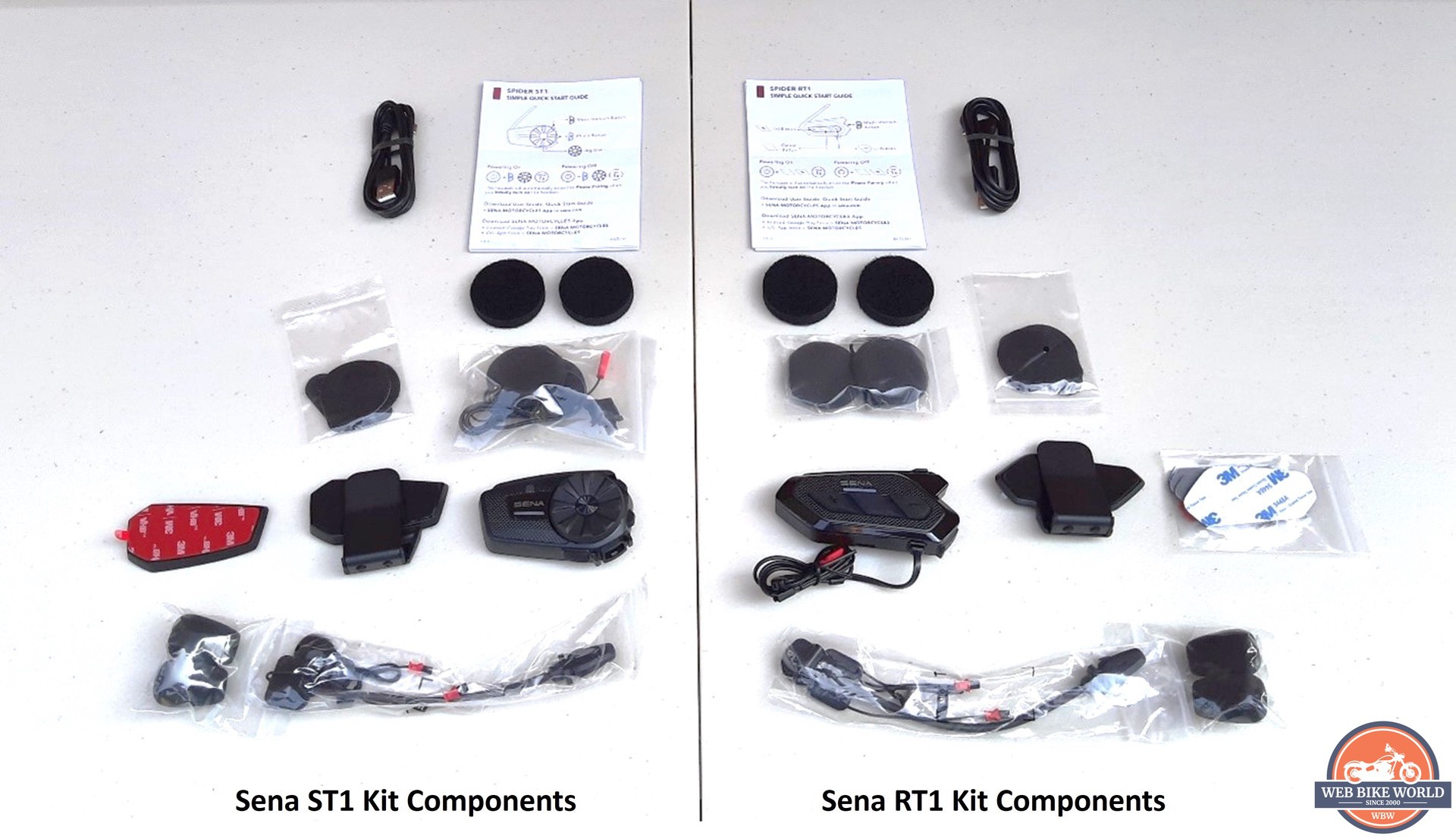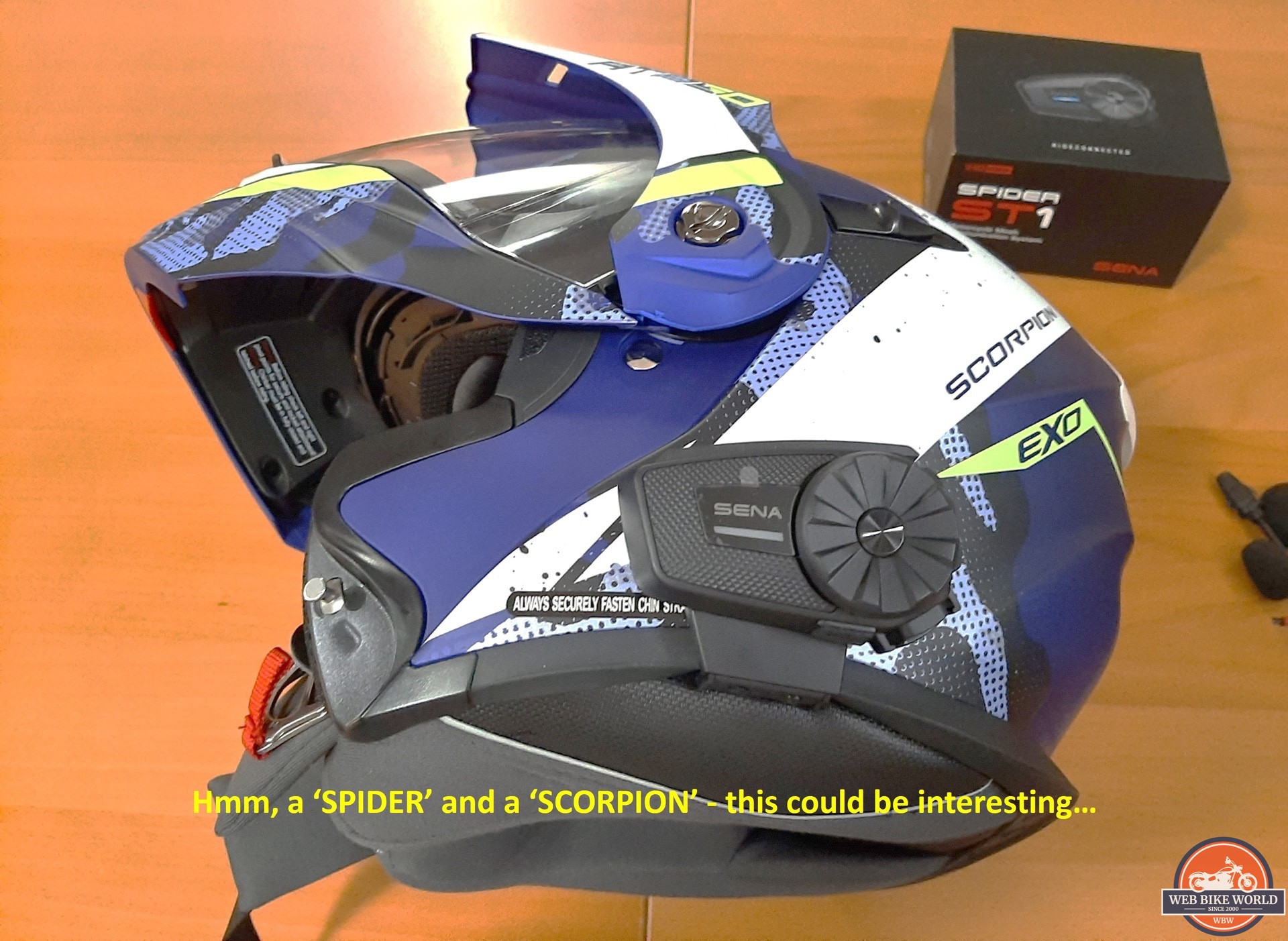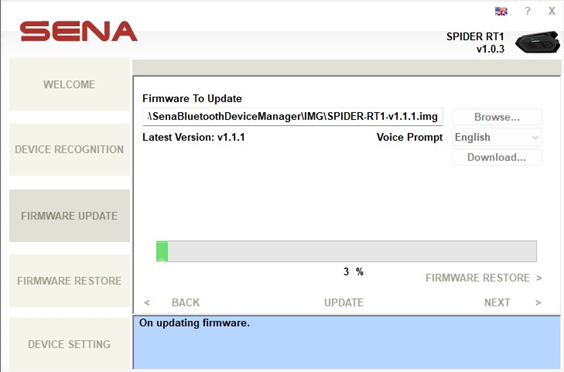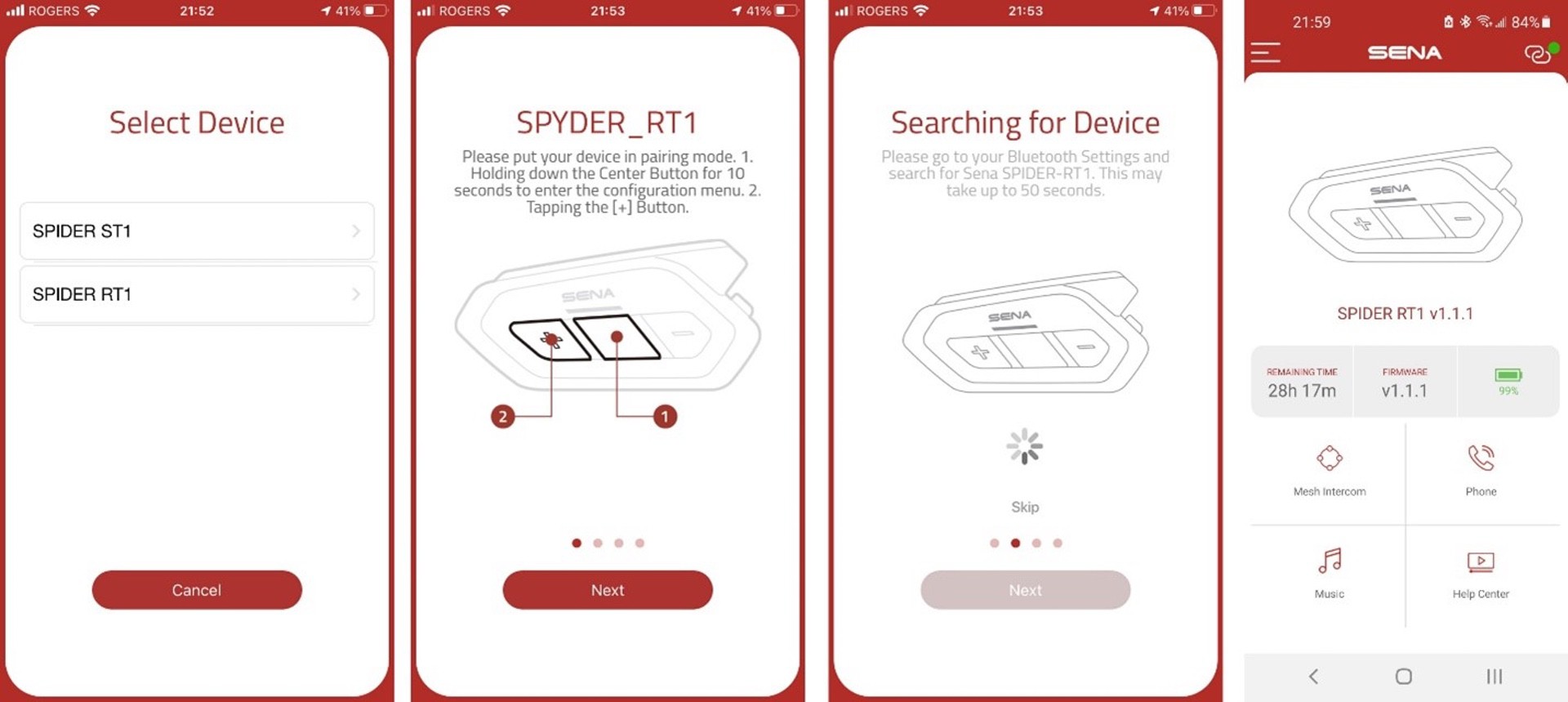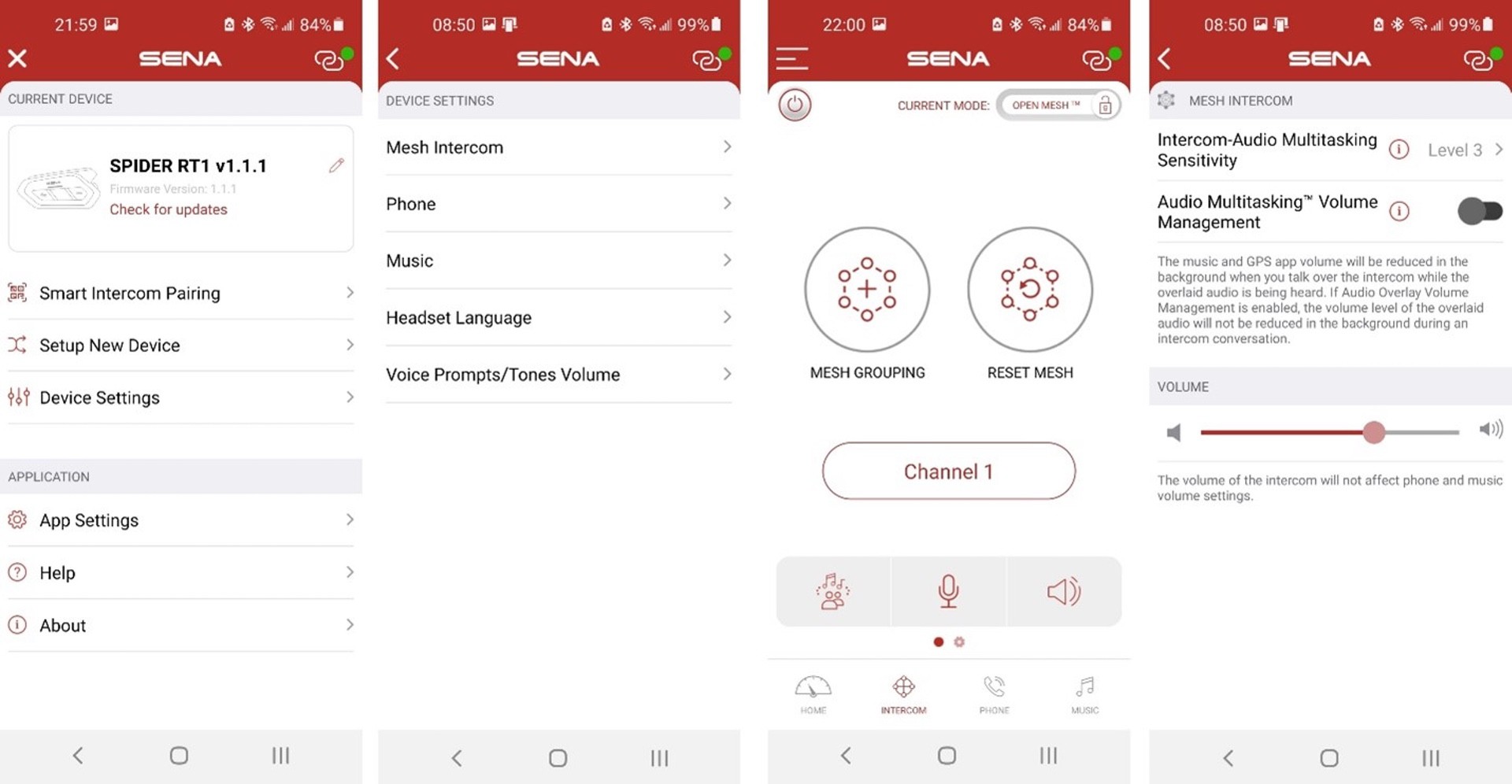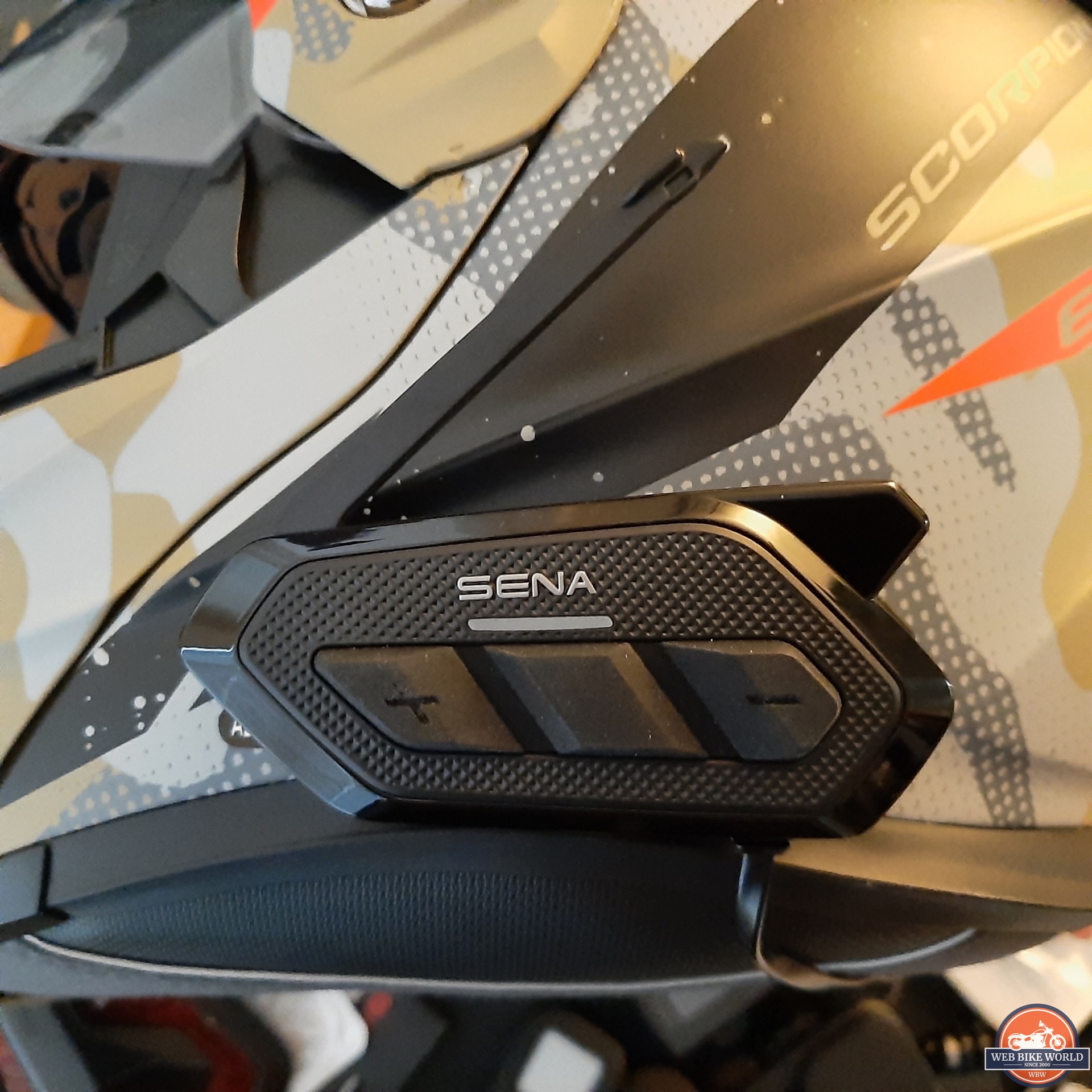Yikes, here we are, already riding in Fall 2021—although the extended trips and long distance-based adventuring opportunities are destined, it seems, to remain on the longer-term planner for now (c’est la vie).
But many enthusiasts in other parts of North America and around the world are in motion, and as they continue to document and share their adventures with the rest of us, it seems to generate a kind of multimedia-based energy that we can draw upon.
Reviewing motorcycle gear in the current environment is a bit more isolationist, although having two riders in the household and close friends who are more than willing to go for distanced rides with new gear keeps it all workable. That’s how I was able to review these two Sena Spider mesh-only intercom systems.
These new Sena SPIDER products seem to be generating a lot of discussion—pros, cons, and otherwise, which is hard to ignore.
As always, this review of the Sena SPIDER RT1 and ST1 MESH-based systems is focused solely on the products provided, their listed features and specifications, our long-term experience with Sena products, and our findings and assessments. This initial review is not a comparative submission; that, likely remains to be done.
Now having said this, there is always room for both the objective-based analysis and personal experience, which is indeed more subjective in nature; a summary of both is found at the end of this review.
While not a specific focus of this review, Sena’s positioning, and pricing of the SPIDER RT1 and ST1 systems within their extensive product line is an interesting factor needing appreciation when looking at the features and capabilities of these new offerings and in considering the impact they may have within the competitive environment.
Sena makes clear reference to the premium 50 series products when touting the SPIDER systems—smart marketing, but there is some risk here as well, especially if the new RT1 and ST1 systems don’t or can’t live up to the marketing hype.
Do they? Well, let’s find out.
wBW Product Review Policy & Approach
The product used for this review was provided by Sena. Note that we do not (ever) allow any product suppliers to influence review content or subsequent scoring. The full details on wBW review policies can be found here.
Ever since its inception and first reviews, anyone who wants to contribute to wBW must play by the rules and stated policies. Everyone here knows you can’t just try something out once or perhaps twice and then provide an honest detailed opinion of that product. Everything tested and reviewed is used as much as possible and often for extended periods of time.
As clearly stated in the About WebBikeWorld section, we believe that a good review must be earned and evaluate each product on its own merits. We show no favoritism or bias in our reviews and provide high-res photos so you can see the product up close for yourself.
The Sena SPIDER RT1 and ST1 headsets have been used almost exclusively since early August of this year on multiple helmets, and as with virtually every piece of interface or communications gear around here, they continue to be used.
Sena SPIDER RT1 & ST1 First Impressions & Observations
The Sena SPIDER RT1 and ST1 packaging is familiar and includes everything needed to install the systems on virtually any style of helmet.
Shape-wise, the two systems resemble the 50R and 50S products respectively, which is totally intentional. There are finish differences resulting in a more muted look—subdued, classy, darker—and yes, a bit spider-ish perhaps.
With its tightly-integrated three-control panel, the Sena SPIDER RT1 is sleek, cleaner looking, and low profile in the hand and when fitted. The Sena SPIDER ST1 (standard) version is instantly recognizable with its reduced sized but totally functional Jog Wheel that is (thankfully) retained; it is my all-time helmet headset control.
Despite their MESH-based intercom feature, both modules retain a separate MESH Intercom Button or MIB control located behind the flip-up antenna (used to turn the MESH feature on or off) and other input options.
Sena SPIDER RT1
The Sena SPIDER RT1 features sleek low-profile styling and a three-button (Plus, Centre, and Minus) layout. The RT1 uses an integrated interface harness with short and long leads with modular connectors for the left and right speakers and microphone (boom or thin-wire). Its USB Type-C port is located on the lower back edge.
Sena SPIDER ST1
The Sena ST1 has a bit of a smaller footprint but slightly more side profile, with Sena’s tried-and-true Jog Wheel providing both rotational and centre button control, along with the back edge Phone button and previously-mentioned MIB control on the upper back edge. The USB Type-C and headset interface ports reside on the lower bottom edge.
As viewed directly, a bright horizontally-positioned LED sits below the distinctive Sena logo on the face of each module, providing visual function status of the system, while small LEDs positioned above the charging/data USB Type-C ports provide connectivity and charging status visuals.
Both SPIDER series systems come with the premium HD speakers first seen with the Sena 50 Series headsets. This headset, along with the App-based EQ feature provides audio gains regarding volume, bass boost, and overall clarity—whether for communications or music-listening.
While the Sena SPIDER systems are priced well below the feature-rich upper tier models, many of the tried-and-true firmware-based features for multi-device BT pairing, audio multitasking and MESH communications tailoring are present and now remotely configurable using the new and seemingly evolving Sena Motorcycles App.
Comparison Table for Sena 50 Series & Sena SPIDER Series Systems
| Feature | Sena 50S/50R | SPIDER RT1/ST1 |
| Bluetooth Version | BT 5.0 | BT 5.1 |
| Intercom Modes | Bluetooth & MESH | MESH |
| Bluetooth Modes | Up to 2 km or 1.2 mi | Not applicable |
| MESH 2.0 Modes | Open & Group MESH | Open & Group MESH |
| MESH User to User Range | 1.6 km or 1.0 mi | 2km or 1.2mi |
| MESH Multiuser Range | Up to 8 km or 5mi | Up to 8 km or 5 mi |
| HD Speakers Headset | Yes | Yes |
| Music Sharing | Yes | Yes |
| Audio Multitasking | Yes | Yes, always on |
| Audio Equalizer | Yes | Yes |
| Advanced Noise Control | Yes | Yes |
| Built in SBC Codec | Yes | Yes |
| FM Radio | Yes, 10 preset station memory | No |
| Voice Prompts | Yes | Yes |
| Voice Command | Yes, 8 languages | No |
| Digital Assistant Access | Yes | Yes |
| Sena Remote Control Support | Yes | No |
| Battery Fast Charging | Yes, about 1.0 hr | Yes, about 1.5 hrs |
| Fast Charger Benefit | 20min = 6hrs BT or 3.5 hrs MESH | 20min = 3.5hrs MESH |
| Battery Charged Talk Time | 13hrs BT, 8hrs MESH | Up to 11.5hrs |
| WiFi Adapter w/Charging | Yes | No |
| WiFi Adapter Updating | Yes | No |
| Sena App | Sena Utility App | Sena Motorcycles App |
SPIDER RT1 & ST1 Features & Specifications
RT1 & ST1 Common Features
- Bluetooth v5.1—for better efficiencies from system features
- BT Profiles: HSP, HFP, A2DP and AVRCP
- MESH Intercom: user to user—up to 2km (1.2mi) in open terrain, up to 8km (5mi) with minimum of six riders
- MESH Users: Virtually limitless for Open MESH Intercom, 24 riders for Group MESH
- MESH Channels: Open Mesh—9 channels
- HD Speakers
- EQ audio output settings selectable under App
- Audio multitasking
- Advanced Noise Control
- Codec: Built-in SBC Codec
RT1 & ST1 Specifications
- Module dimensions: 97mm x 48mm x 27mm (3.8 in x 1.8in x 1.0in)
- Speaker Driver Unit: 40mm x 7.2mm (1.58in x 0.29in)
- Wire between speakers: 555mm (21.8in)
- Boom microphone length: 150mm (5.9in)
- Wired microphone length (lead): 255mm (10in)
- Module weight: 65g (2.29oz)
- Battery Type: Lithium Polymer Battery
- Battery Charging: Standard 1.5hrs, 20min on Fast Charge provides 3.5hrs of MESH intercom use, charge during use
- Battery Talk Time: up to 11.5hrs
- Operating Temperature: -10C to 55C (14F to 131F)
- Charging Temperature: 0C to 45C (32F to 113F)
- Certificates: CE, FCC, IC
Sena SPIDER RT1 & ST1 Kit Contents
The SPIDER RT1 & ST1 packaging is quite basic but complete. Contents of the two kits are essentially the same, other than the modules themselves and shaping/layout of the slip-on and adhesive mounting pieces. Both kits come with the Sena HD speakers along with boom and thin wire microphones, all with modular connectors.
As discussed below in the Installations Section, the lightweight and easy-to-use slip-on mount (identified as the clamp mount) is an excellent mounting solution for these lightweight systems, and for adhesive mounted solutions the low-profile hook-n-loop pieces are a very good option with a strong grip between the surfaces for great security of the module.
Not to say that the larger base housing doesn’t serve good purpose with some systems, like the Sena 20S, 30K, and 50 series products, as the base ports support both a 3.5mm output for other headset solutions and a 2.5mm auxiliary input for other connectivity.
But simple is good—and in appreciating design, layout and cost, the mounting pieces included with the SPIDER systems will address requirements for a wide variety of helmets.
Sena SPIDER RT1 & ST1 Installations
The Scorpion EXO AT-950 Outrigger Modular ADV style helmets in Matte Blue (L) and Sand (XL) purchased earlier this riding season were good first hosts for the SPIDER RT1 and ST1 systems, especially as the helmets are so easy to work on.
With the chin bar raised and the removable cheek pad/neck roll pieces pulled away or removed from their lower edge inserts, the Sena HD speakers are quickly fitted into the EPS recesses and the leads run between the removable headliner and the EPS.
The boom microphone option is used for the modular AT-950 helmets with the included mounting pieces facilitating layout and securing of the boom assembly.
SPIDER ST1 System—for the ST1 Jog Wheel variant fitted onto the Large AT-950 (shown above), the slip-on (clamp) mount is used. As long as due care is taken regarding the lower plastic insert edges of the removable cheek pads, the mount is adjustable fore/aft for optimal placement, is very stable, and has a low profile with the module in place.
SPIDER RT1 System—the somewhat elongated RT1 module is secured to the helmet using the hook-n-loop pads fitted onto the shaped plastic pieces. Once mounted, this is a very secure option and there are no concerns about the module staying in place—it takes a good amount of shear force to separate the pieces. The whole assembly is very low-profile.
The integrated harness runs from the back lower edge of the module and the lower neck roll section of the left liner component. With the right and left speakers and boom microphone leads connected on the inside, a bit of excess wiring is tucked along the bottom of the helmet, secured in place by the liner piece once it is fully reinstalled and secured.
Subsequent fitment on other modular full-face and three-quarter style helmets didn’t reveal any mounting or fitment issues. The speaker and microphone leads are long enough to address most helmet styles andcomponent layouts and the included speaker (spacer) pads can be invaluable in getting optimal fitment of the HD speakers vis-à-vis the ears.
Sena SPIDER RT1 & ST1 Features, Function & Performance
Initial Use
Charging: A full charging should be done before first use. Take the provided USB Type-C to USB A cable, pull out the tethered cap sealing the port on the modules, insert the universal fit Type C connector into the port on the module and connect the other end to a compatible 5V regular or fast charge source—when charged, the small LED goes from Red to Blue.
Respective system battery levels are indicated during initial boot-up, with four, three or two Red LED flashes indicating assessed battery level. Anything under two flashes should result in the ‘Low Battery’ warning being heard.
The Sena SPIDER RT1 and ST1 systems can be used while connected for charging; it is a virtual standard with many new motorcycle intercom systems irrespective of brand. On the flip side, some newer systems, including those bearing the Sena logo, no longer provide this ability—which is unfortunate as it can be a critical factor in some situations.
Power On and Defaults: For the RT1, press the Plus and Centre buttons for 1s; for the ST1, press the Jog Wheel centre and Phone button for 1s. The systems will boot up, with ‘Hello’ followed by the appropriate tones as previously paired devices are detected, etc.
SENA Device Management
Sena Device Manager: This piece of time-evolved PC-based software is another mainstay of the Sena support approach, usable once the physical USB connection is made to the Sena device.
Users can quickly and easily upgrade firmware and/or configure settings for any and all Sena (and other supported) devices. Versions of the Sena Device Manager are also used by suppliers that use Sena-based headsets designed for or integrated into other brand helmets.
The only real note to make about using the Device Manager is that one needs to read the supported device listings, which grows all the time, to make sure the correct connection steps are followed so the software properly recognizes and connects to the devices. For most new systems, the auto-detection and connection routine simplifies things even further.
Sena Motorcycles App: Hmm, another new system, another new Sena App. To say Sena has an abundance of smart-device-based Apps would be an understatement. Users need to be aware of which App supports a specific system, series, or line of products, and this newest App works only with the Sena SPIDER RT1 and ST1.
Released mid-July this year, the Sena Motorcycles App is available in iOS and Android flavouring. With the headset paired to the target mobile device, the App can be downloaded and installed. Once launched, it finds the current connected device (RT1 or ST1) and the menu becomes active.
I suspect the Sena Motorcycles App is a work in progress (understandable) but one thing it does provide relative to most of the other Sena Apps is more remote-control functionality vis-à-vis system features. This is a trend (and capability) that bodes well going forward. Some of this functionality is described in later sections.
Overall, the Motorcycles App is quite stable, and when running on a BT v5+ smart device along with the BT v5.1 services on the RT1 or ST1, pairing, connecting and input commands are executed quickly. The odd aperiodic disconnect is experienced when moving between the App and streaming services, etc., but functionality is usually restored quickly.
Sena RideConnected App: Available for iOS (optimized for the iPhone) and Android, this App allows users to communicate with fellow enthusiasts globally by using their paired device’s phone/data connectivity. This eliminates restrictions regarding range and the number of intercom connections available.
RT1 & ST1 Device Pairing & Connectivity
With Bluetooth 5.1 onboard, pairing with devices—old, newer or somewhere in between—is fast and typically painless. If required, the default PIN is still ‘0000’. Pairing with multiple BT devices is possible—mobile phones, a second mobile phone, standalone navigation devices, Sena SR10, etc. No support for Sena remote controls is provided.
There are three options to pair the primary device:
- Initial power up or from a factory reset/reboot—the system goes into phone pairing mode
- Pairing when the system is OFF—with the ST1, press and hold Jog Dial and Phone buttons for 5s. With the RT1, press and hold Plus and Centre buttons for 5s. With Red/Blue LED flashing on either device, select ‘SPIDER ST1 or RT1’ in your device’s BT listing and complete the pairing.
- Pairing when the system is ON—with the ST1, press and hold Phone button for 5s; with the RT1, press and hold Centre button for 5s; with Red/Blue LED flashing, complete pairing per above.
To pair a second device, such as GPS or the Sena SR10:
- For the RT1, press and hold Centre button for 10s until you hear ‘Configuration Menu’. Now tap the Plus button, and you’ll hear ‘Second Mobile Phone Pairing’.
- For the ST1, press and hold Jog Wheel for 5s until you hear ‘Configuration Menu’, then rotate the wheel clockwise slowly (forward if helmet on head) until ‘Second Mobile Phone Pairing’ is heard, and complete the pairing as described above.
For GPS Pairing:
- For the RT1, press and hold the Centre Button for 10s until ‘Configuration Menu’ is heard. Now double tap the Plus button until ‘GPS Pairing’ is heard and follow screen prompts on the navigation device to complete pairing.
- For the ST1, press and hold the Jog Wheel for 5s until ‘Configuration Menu’ is heard. Now rotate the wheel clockwise (forward if helmet worn) slowly until ‘GPS Pairing’ is heard; complete pairing as for the RT1 process.
Note—if you pair the GPS device using this specific GPS pairing routine, audio from the GPS will interrupt your MESH intercom conversations.
Tip—if your standalone GPS (not phone launched App) supports multiple BT profiles and services, especially those with a BT Hub capability (like zumo, BMW Navigator and others) make sure only the desired audio service or services are selected on the navigation device.
Why? Well, some devices, when paired for use, automatically activate (or check) the option boxes—or as is common with (most) iOS devices, reserve all available profiles; this can really limit multi-device connectivity and switching between discrete audio services.
Sena SR10 Device Pairing—this device, among other Sena adapters, often gets overlooked by Sena headset users. While it is (admittedly) long in the tooth, it can still be a great wired-to-wireless gateway for multiple devices, especially FRS/GMRS type transceivers—although BT-capable versions of these longer distance communication devices are readily available.
A typical SR10 pairing to a Sena headset, like the RT1 or ST1, is simple. With the SR10 turned ON, hold its top Pairing button for five seconds until the LEDS go into the familiar Red/Blue sequence; now initiate the process for the Second Mobile Phone/Device Pairing as described above for the RT1 and ST1 devices.
RT1 & ST1 MESH Intercom Features
While not the first to offer up MESH-based communications for a helmet headset, Sena is arguably the market leader when it comes to use, evolution and marketing, with multiple MESH capable systems (consumer and industrial) and an ever-expanding Sena MESH communications community.
Between the Sena 30K, the 50 series systems, Momentum EVO Smart Helmet, the +MESH adapter and, the Sena Industrial MESHPort Blue adapter that is pairable with virtually any BT-based headset (portable or helmet mounted), it’s easy to become part of the ever-expanding Sena MESH environment; one that now includes the Sena SPIDER series.
Sena MESH 2.0 Modes
The SPIDER series systems, like the other Sena MESH-endowed systems, offer two MESH intercom modes; Multi-Channel Open MESH Intercom and Group MESH Intercom.
Multi-Channel Open MESH Intercom is the ‘public’ forum if you will, letting users communicate seamlessly and (effortlessly) with a virtual unlimited number of other users.
Users can also select from nine channels (Channel 1 is default) to minimize interference between smaller groups, for focus conversations or privacy; this is great for lead/instructional use, ride groups, etc.).
Group MESH Intercom allows users to create a private group supporting up to 24 users. A user initiates a Group MESH session and users are invited into this group, providing added control and privacy.
The only real caveat in using the MESH Intercom is that each Open channel or created Group Mesh is limited to six active talkers at one time; the party-line approach needs to be appreciated at times with larger numbers of participants.
MESH Intercom On/Off
Tap the MESH Intercom Button or MIB once. The LED begins blinking with a green light, and ‘Open MESH and Channel 1’ is heard. Tap the MIB again to turn the feature off; ‘MESH Intercom Off’ is heard. The default settings are Open MESH and Channel 1.
Navigating the Settings
The default or reset is Channel 1. Moving between Open MESH channels involves a double-tap on the MIB, then using the Plus or Minus buttons to step forward or backwards within the 1-9 segment.
If no other button is pushed for 10s, the selection is automatically saved off, or you can lock the desired selection manually by pressing the Centre Button—‘Channel is set, Channel XX’ is heard. This setting is retained unless changed again or the user resets MESH (hold MIB for eight seconds).
Creating a Group Mesh
This requires two or more Open MESH users. The two SPIDER systems users (M1 and M2) press and hold their MIB buttons for five seconds (5s); ‘MESH Grouping’ is heard. When the MESH Grouping is completed, the users hear ‘Group Mesh’ as the systems switch from Open MESH to Group MESH.
Moving between Open and Group MESH
Users can conveniently move or ‘toggle’ between Open and Group MESH without resetting anything and work in the active venues. To toggle between Open MESH and a created Group MESH, press the MIB for three seconds (3s)—the respective ‘Open Mesh’ or ‘Group Mesh’ announcement is heard to verify the active venue.
Adding Group MESH Participants
Any current Group MESH participant can allow one or more new users from Open MESH to join the Group MESH.
As coordinated, Group MESH user M2 pushes their MIB for five seconds (5s) as do the invitees (M3 and M4) who are in Open MESH mode; ‘MESH Grouping’ is heard by all three. When the updated MESH Grouping is completed the new users (M3 and M4) hear ‘Group MESH’—done. This Group MESH activity now has M1 thru M4 as participants.
RT1 & ST1 MESH Intercom Performance
Stated Coverage
With continued BT version enhancements and tweaking of the MESH capability, Sena now claims a 2km or 1.2 mile range for point-to-point use in open terrain. And with a minimum of six riders providing multi-system connectivity, coverage of up to 8km or 5 miles is possible using an interval of 1.6km (1.0 miles).
Real World Performance
While we haven’t yet managed to get six or more MESH-based riders out and about, two to four user configurations, comprising two SPIDER systems and two 50 series systems or the two SPIDER systems along with a 50S and a 30K system have pretty much validated Sena’s claims regarding performance.
With the two SPIDER systems operating over open terrain, ranges of close to or possibly a wee bit beyond 2km have been noted without any significant audio degradation. The audio drops when a link is lost, but restoration is typically quick in these point to point scenarios.
When the road gets curvy and there is more ground cover (brush and trees), ranges can diminish somewhat—but typically not below 1.0 to 1.5 kms.
Given the network technologies involved, and having used MESH for quite some time, one expects the multi-rider configurations to provide better overall intercom performance, and the MESH 2.0 feature on the SPIDER systems does not disappoint.
With typically shorter distances between riders and multiple riders (users or nodes), the signal optimization and connectivity advantages of MESH really come to the fore to provide very quiet and extremely reliable communications.
In some ride scenarios we’ve had ourselves spread out over 3-5km in serial fashion along a main road, and then had some users split off to take distanced but roughly parallel paths on county roads for depth and breadth. Group-wise, this front-to-back and side-to-side layout didn’t impact comms in any way. This is a clear MESH advantage that is hard to ignore.
Of course, user to user (and thus, overall ranges) are impacted by limitations of the respective systems in the mix—which, in my case, included a couple of +MESH adapters and one Sena MESHPort Blue. But overall the MESH communications environment is ultra reliable, with the MESH-based group enjoying quiet seamless comms connectivity.
RT1 & ST1 Audio Features & Performance
Although some audio-based features didn’t make it into the SPIDER series systems—most notably the onboard FM radio—overall audio output and performance is not compromised, thanks in large part to the HD Speakers and the Audio Equalizer settings found under the Sena Motorcycles App settings.
Speakers
The Sena HD Speakers, originally found on the Sena 50 Series systems, were subsequently offered up as optional accessories—the Sena HD (Type A and Type B) Speaker Kits for most newer models. These provide a big audio boost, and with respective model firmware updating, an audio EQ feature as well.
Sena continues this audio standardization effort with the premium HD speakers now included on the 30K and 20S EVO products and soon, for the 10C EVO.
Audio Equalizer
With the HD speakers, and the Audio Equalizer setting On (default is Off), the user can increase or decrease the output level at different frequency ranges: Balance, Bass Boost, Mid Boost and Treble Boost. This is one feature that users need to take advantage of.
Where noise levels and speed are low, there are real audio differences between the Bass, Mid and Treble Boost settings—although for most riding, the Mid Boost setting works the best for this rider; your experience, of course, may differ.
Volume
Previously moving between virtually all generations of Sena speakers up to the HD speakers, the deltas in performance were evident to degrees. But the biggest delta so far is in experiencing the HD speakers, with a big difference regarding quality—and, best of all, overall output (or volume).
As motorcyclists, noise is a fact of life and it never goes away. But a good helmet, ear protection, and a headset with the ability to customize or better adapt the helmet audio environment can play an important role regarding noise, fatigue, comfort and safety.
I also acknowledge that some users of newer Sena systems with HD speakers still want more ‘output’. To them I say: you probably need something like the iASUS EAR3H Audio Amp that I only use sparingly and with caution.
Audio Settings
With the SPIDER RT1 and ST1 systems, Audio Multitasking is always on, providing the ability to utilize the MESH intercom and have any overlaid audio in the background at a controllable level. The Intercom-Audio Overlay Sensitivity and the Audio Overlay Volume Management settings provide management.
These settings are accessed from the individual device Software Configuration Settings when connected to the Sena Device Manager or to the Sena Motorcycles App.
Audio Streaming
With the desired music player or service launched on the paired device, push the Jog Wheel centre for 1s to start or stop the track. AVRCP control is provided by holding the Wheel in and rotating it to the back or to the front respectively for Track Forward or Track Backward
Music Sharing
This feature can be shared with one other user, and once initiated, both users have remote control over the playback—let the games begin.
This feature can be started directly from one of the SPIDER systems or via the Sena Motorcycles App and the MESH Mode screen, using the Music Sharing tab on the left.
With the RT1, hold the Minus button for 3s; on the ST1, hold the Jog Wheel control for 3s or press the Music Sharing tab under the App. The initiating system user hears ‘Music Sharing On’ and the other user (or users hear) ‘Would you like to accept music sharing?’.
The second user (or with multiple users, the first user that responds to the request by pressing their MIB button) gets to hear the music, confirmed by a set of double tones in the receiver headset. The music stream starts almost immediately; some audio output levelling is a good thing to do before initiating this feature.
With the (default) Intercom-Audio Multitasking Sensitivity set (Level 1 to Level 5, low to high respectively) under the App’s MESH Intercom screen, intercom audio is heard along with the music streaming. Foreground/background audio levels are based on the sensitivity level. It’s all quite seamless. Level 3 is a good starting point.
Note—if Audio Multitasking Volume Management is enabled (slider to the right), the volume level of the overlaid audio (e.g. music sharing) is not reduced into the background.
Initiating the music sharing feature is simple and reliable, as is the remote AVRCP control between the two users. The odd processing timeout does occur and when the Pause control is pushed, music sharing tends to end rather than just pausing the music.
Speaking of ending music sharing, mutually or manually ending this sharing is easily done via the App by simply pushing the Music Sharing tab (that goes Red while active) with normal intercom functionality continued.
Music Sharing Observation—no procedure to end music sharing from the device is (currently) documented, although pressing the MIB button for one second (expectedly) ends the MESH intercom along with the music sharing. And as identified above, using the AVRCP ‘Pause’ step ends music sharing (unexpectedly) along with the intercom—whether this is a bug or a timing issue isn’t known at this time. Using the Music Sharing control under the App works reliably.
Sena Motorcycles App Observation—with the iOS version of the App and when starting, stopping or reactivating the Music Sharing feature or even when Music Sharing was accepted (App tab shows Red), a pop-up screen message, “failed to share” appears now and then.
Voice Prompts
The voice prompt library is quite extensive. Eleven languages are supported but currently only selectable when using the Sena Device Manager; this feature could possibly be a future selectable inclusion for the Sena Motorcycles App.
Voice Command/Digital Assistant
The Sena Voice Command feature is not found on the SPIDER systems, but support is provided for an external Digital Assistant present or configured on the paired smart device. Hold the Centre Button on the RT1 or the Jog Wheel button on the ST1 for three seconds (3s) to activate this feature.
Phone Services
As with other Sena systems, there is a host of mobile phone usage options that will be familiar to Sena users. If new to the systems, it pays to spend the time going through the simpler visuals in the Sena Quick Start references (or the more detailed visual and text-based information in Section 5 of the Sena User Guides).
The Sena Motorcycles App provides an interactive Phone Screen with a Voice Dial tile and three Quick Dial tiles that can be populated, as well as a three tile grouping along the bottom for Calls Listing, Keypad and Contact List access.
Sena RT1 & ST1 MESH Systems Observations
Elemental Integrity
Something (still) missing from Sena systems, including these newest releases, is an elemental build standard (IP Code) or related certification. Given industry standards, consumer demand, and competitiveness (and the fact that many other major manufacturers have already stepped up to the plate), Sena’s lack of response is notable.
However, in using virtually everything Sena has produced over many years in virtually all elemental conditions, this user has only ever had two devices become unresponsive—both after multiple days of exposure to driving torrential downpours. But still, a well engineered product built to a high standard should be identified as such under an applicable qualification or code.
Connectivity
As is the norm with Bluetooth v4.2+, especially BT 5.0 and 5.1, connectivity is fast and seamless with most devices (although it can be a little slower when working through the steps found on some onboard motorcycle systems). And once paired initially, unless some clearing of the pairings and/or profiles is done, recognition and connecting is issue free.
Inputs
The three horizontal buttons on the SPIDER RT1 and the main Jog Wheel and Phone button controls (along with the MIB buttons on the upper back of each module) are easy to access, discern and use. The Jog-Wheel-equipped ST1 is still easier to use while wearing heavy gloves, though.
If one prefers to use the dynamic interactive services of the Sena Motorcycles App, one can—and this App (while seemingly a work in progress) is more than happy to oblige. much of what most users might want to configure and control is now doable in single automated steps from this new App—good stuff.
The Sena Voice Command feature is missed, however, even though its performance can be questionable on other Sena systems. So, was this feature omitted due to a cost related decision or perhaps some tacit admission of its often so-so responsiveness?
Sena Motorcycles App
As identified above, this user likes where Sena seems to have headed with the firmware of the SPIDER systems, and where they have gone regarding the wireless or ‘remote control’ functionality of configuring and dynamically interacting with the system, especially with the Intercom and Music Sharing capabilities.
Helmet Audio
There isn’t much to complain about regarding the helmet audio environment provided by the Sena HD speakers, especially when the EQ feature is utilized via the Sena Motorcycles App.
And, there is indeed a significant boost in overall volume output as well vis-à-vis earlier systems and those without the HD speaker enhancements. With better volume output and the ‘tuning’ provided by the EQ settings, the user is treated to much better audio and some helmet audio environment control is facilitated as well.
The Intercom
To be honest, the BT side of things has not yet been missed; I didn’t think this would arise as an observation, but it has. The caveat here is that the 2021 riding season groupings are not even close to those that I once used to participate in, so it’s a bit hard for me to tell how much of an impact this difference could make.
Still, the Sena MESH 2.0 is an outstanding feature and Sena is leveraging (and focusing) its features and capabilities for the SPIDER systems with excellent results. With continued use of both SPIDER systems and additional MESH systems in the mix, Sena’s range and coverage claims seem justified from this rider’s perspective.
Electrical/Environment Influences
Users of both Bluetooth and MESH-based intercoms will be clearly aware of how noisy and degraded BT links can get at times (and not just when it comes to Sena). However, MESH is typically whisper-quiet under virtually any electrical or physical environment.
Teasing the Missing FM Radio
The FM radio feature is missed. It was kind of crude when first implemented years ago, but evolved into a reliable service that I used for virtually any type of travel, keeping me connected to the local scene (and weather, of course).
The ‘teasing’ is based on the fact that there are still some direct and indirect references to the FM radio feature in the User’s Guides and other media, and while the Android Sena Motorcycles App is devoid of any textual or visual references, the iOS version makes me wonder what happened here. The FM Radio tile is still clickable under the Music feature, along with the settings and channel screens being viewable—but it’s not active.
Battery Life & Charging
With the MESH Intercom in steady use, some occasional phone calls, and periodic music streaming sessions, battery life does decrease. But it still allows a couple of half-day rides before needing recharging, so a full day of riding should not be an issue.
If charging on the go, optimal functionality is maintained. Static recharging is fast and seldom does charging take more than 60 to 70 minutes, even for a well-depleted battery.
Sena Warranty & Support
The Sena SPIDER RT1 and ST1 products are covered by a two-year warranty, and the full warranty guide provides all the essential information needed regarding warranty coverage, returns, and service support.
Here are the specific Sena FAQ pages for the Sena RT1 and the Sena ST1. Support-wise, Sena provides ongoing warranty and product support through direct contact and various forums, including their own help website.
Final Thoughts on the Sena SPIDER ST1 & RT1 Mesh Systems
Other than the missing FM radio, the sometimes quirky Voice Commands, some of the multi-channel multi-source audio capabilities (and of course a Bluetooth intercom), what the SPIDER systems feature and provide performance-wise is an extremely good investment.
Using the SPIDER systems on any of the helmets I’ve installed them on has not been negative in any way; they have both paired up with any device offered without subsequent issue, and provided great MESH-based intercom functionality and excellent audio from the HD speakers, enhanced by using the App-based EQ feature.
The best thing about the SPIDER systems? Without a doubt it is the MESH 2.0 communication capability—ease of use, versatility, networking range and coverage where length and breadth factors apply between all users, the flexibility to move between Open and Group MESH venues and, all within a mixed-device environment.
While the SPIDER series systems are obviously derived from the Sena 50R and 50S products, there are real differences; most are clearly identified by Sena, others not so much. It can be frustrating when one needs to do some digging to find out what’s in and what’s out when a new product is released, but hopefully the wBW table presented earlier helps in some way.
Do I guzzle the Sena Kool-Aid? Not by a long shot, and Sena has some long-standing issues that need addressing. But while I recognize what they don’t have or can’t do, the SPIDER systems are still impressive examples of what Sena brings to the MESH communication environment, and it’s a lot.
Regardless of whether you can live with the limitations of the SPIDER RT1 and ST1 feature-set, it’s clear that they’re still going to be attractive to many current Sena users who are looking to upgrade or add a newer product to their collections.
It’s also worth noting that the Sena premium 50R Low Profile and 50S with its Jog Wheel are currently priced at $339.00 USD per system while the MESH-based Sena SPIDER RT1 and ST1 systems retail for $199.00 USD each. That is a significant price difference, and it represents excellent value—especially considering the multi-faceted MESH 2.0 capability in the SPIDER systems.
Bottom Line
The Sena SPIDER RT1 and ST1 products provide excellent pairing, helmet audio, and MESH intercom performance. Sena’s balancing act regarding features in and features out is indeed a compromise when compared to the fully featured premium 50 series systems, but the RT1 and ST1 provide a darn good slice of the functional pie that should satisfy many existing and future users.
The best feature of these systems is MESH 2.0, which performs as advertised. Sena isn’t the only MESH player, but they are certainly exploiting it well, and I’m convinced that MESH-based headsets will become a more standard (and well-priced offering)—and not just from Sena. Whether seen as economically-priced or entry-level, the SPIDER RT1 and ST1 MESH-based systems deliver. Highly recommended.
Pros
- Clean simple design and engineering
- Small footprint, low profile
- Excellent mounting options
- BT 5.1 provides fast seamless device pairing
- Dedicated MESH Intercom simplifies functionality and use
- MESH 2.0 performance enhancements
- HD speakers and EQ feature standard
- New Sena Motorcycles App automates many processes
- Excellent battery life and fast charging
- Performance and price hard to beat combination
Cons
- No elemental protection standard identified
- Some audio overlay limitations
- No FM radio
- No Voice Command
- No support for Sena Remote Control devices (it seems)
wBW Specs:
- Manufacturer: SENA
- Pricing: single Sena SPIDER RT1 and ST1 single systems are $199.00 USD each, the DUO packs are $370.00 USD
- Made In: (China)
- Warranty: Two-year warranty
- Review Period/Date: August to October 2021
- Submission Date: 12 October 2021


